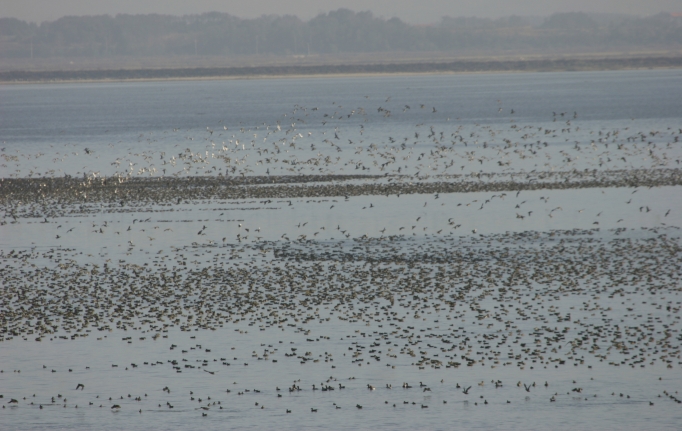
Sunday visiting this enormously important migration stopover point and wintering area, which Birds Korea
considers the best birdwatching area on the peninsula. Over 200,000 Baikal Teal regularly winter here, and my very
conservative estimate for the day was 30,000. Feeding among them were many other species of waterfowl such as Common Teal, Great
Crested Grebes, and Common Pochards. Flying in great skeins overhead and feeding in the adjacent fields were many thousands of
Tundra Bean and Greater White-fronted Geese (below). Witnessing this major migration event was a powerful experience.
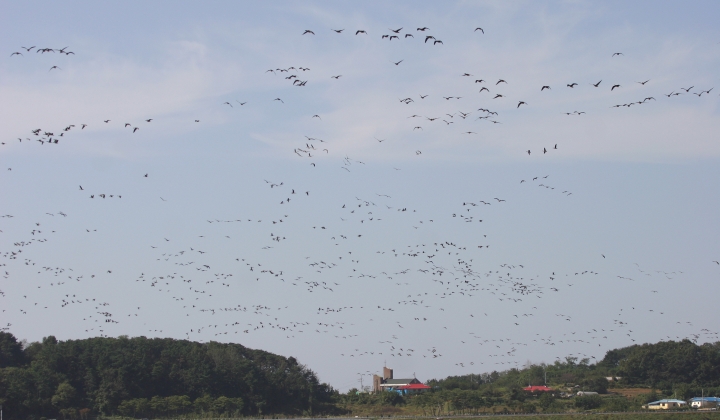
Note to the unimpressed: They're in nonbreeding plumage--the drake is stunning in breeding plumage.
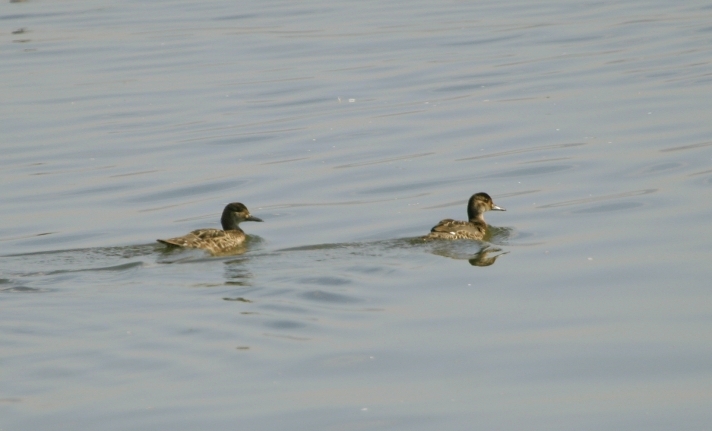

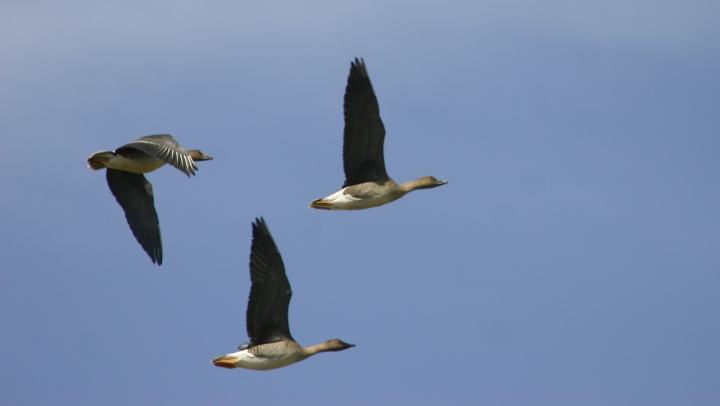
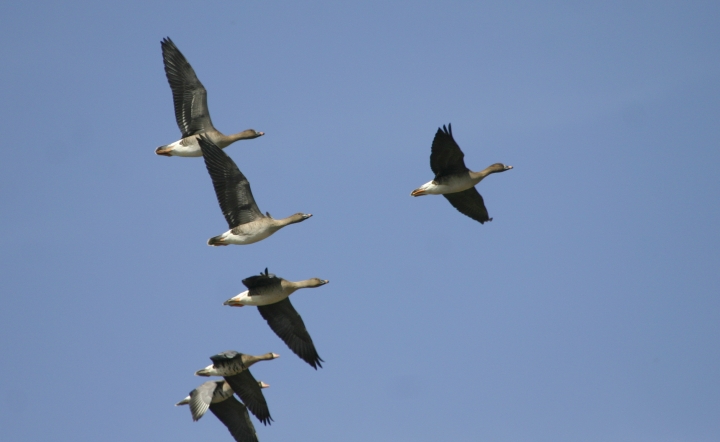
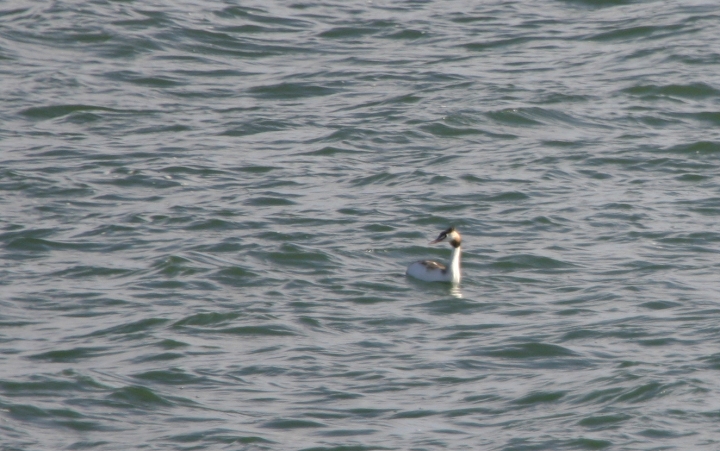

Grebe. A common winter visitor to Korea's lakes and coasts.
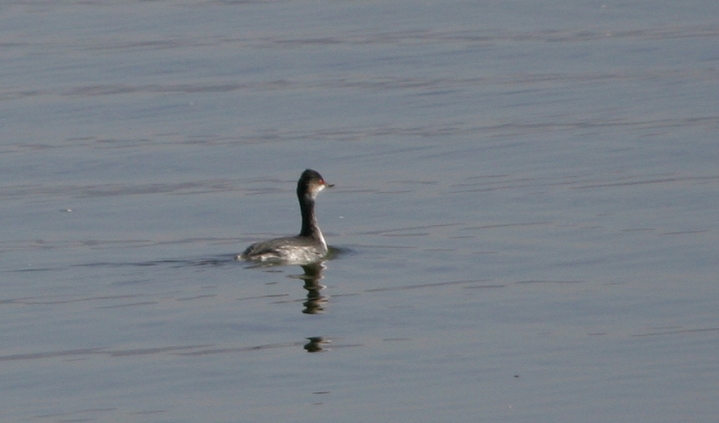
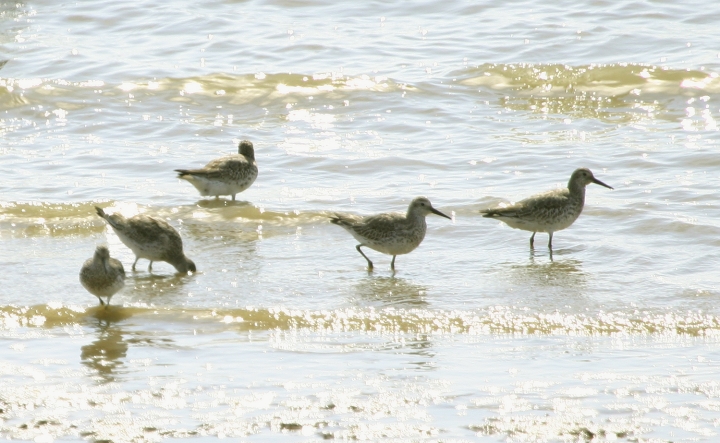
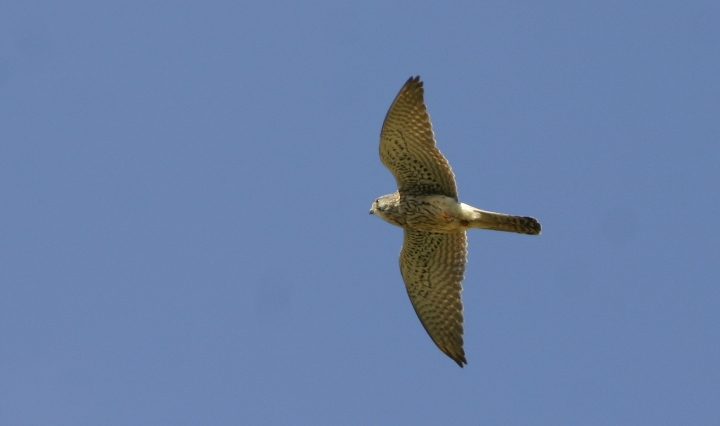
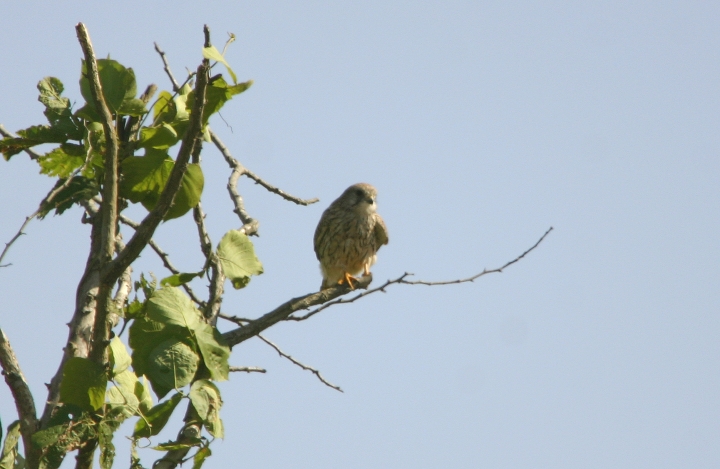
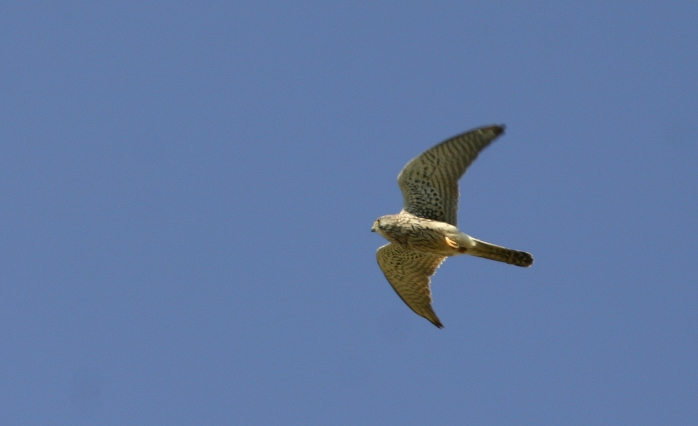
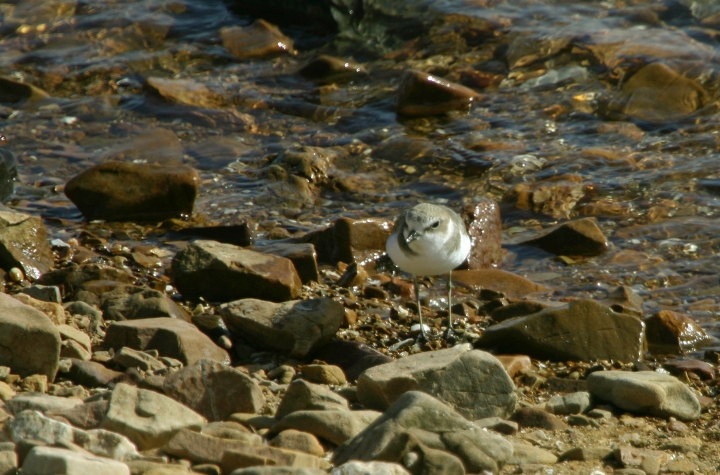
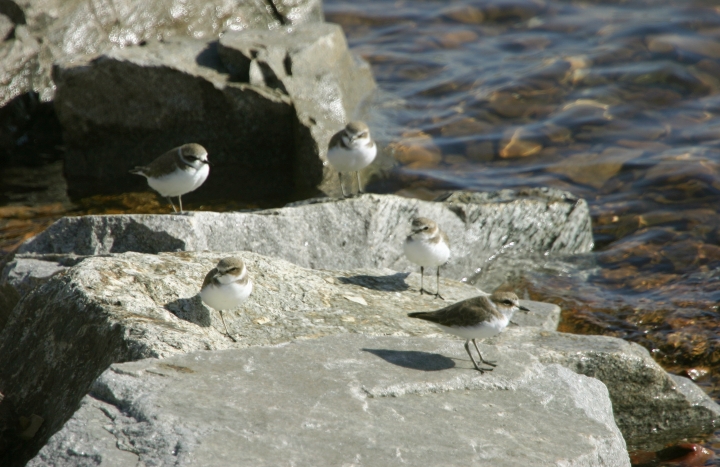
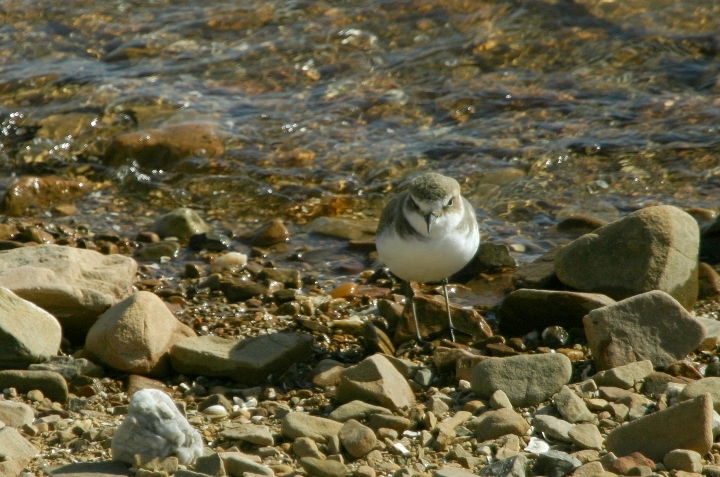

Great Egret and loves rice fields. (A key fieldmark, difficult to observe except at close range, is that the gape (mouth) extends
beyond the eye in Great Egret, and not in Intermediate.)
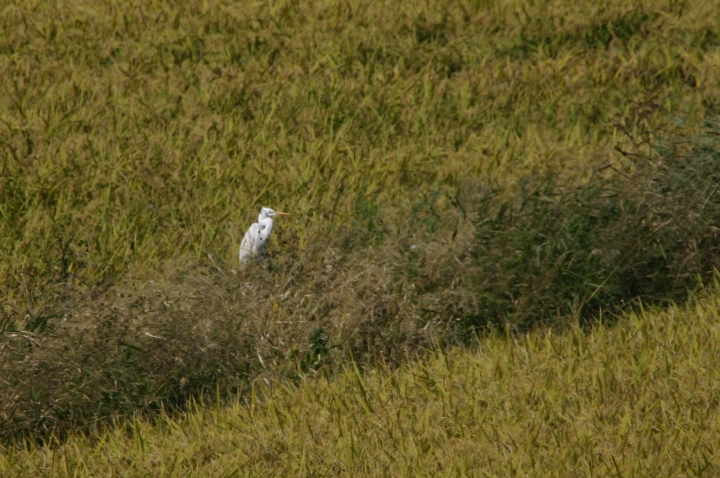
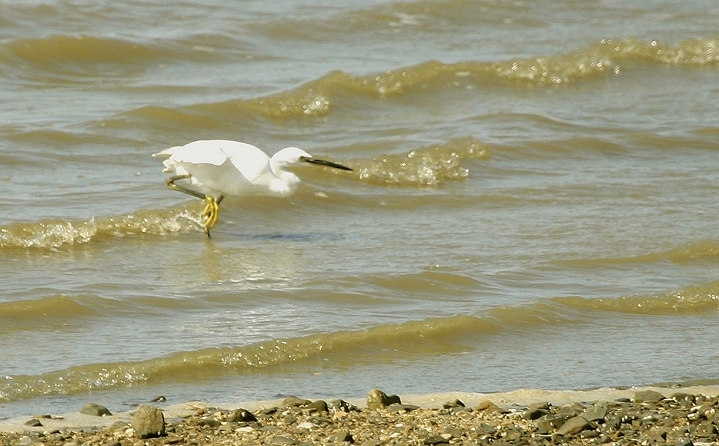
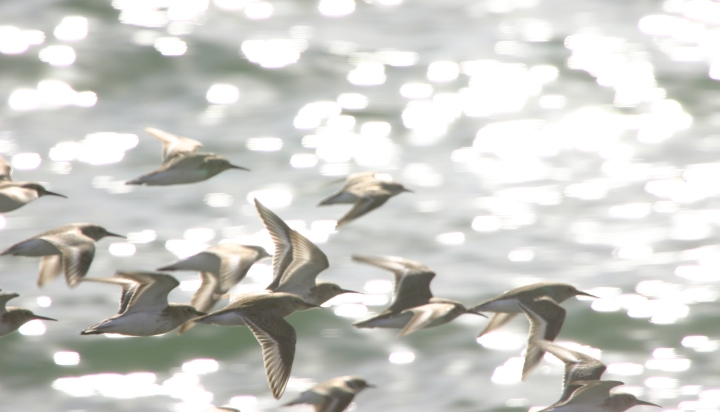
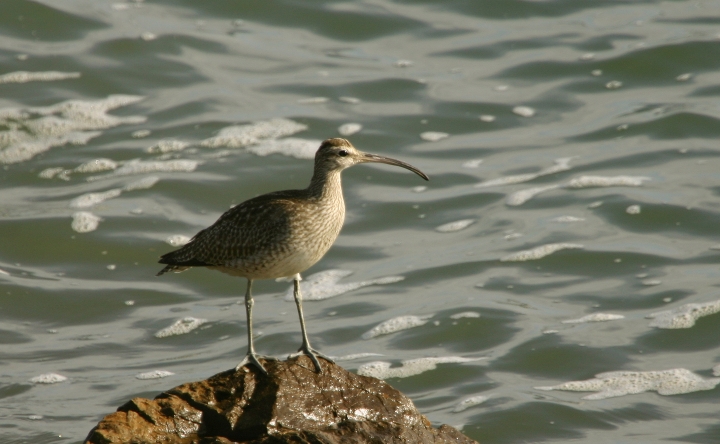
(~40), Great Egrets (~8), INTERMEDIATE EGRETs (~5), Little Egrets (~10), Black-crowned Night-heron (1), Tundra Bean Geese (1000s),
Taiga Bean Goose (1; subspecies middendorffi), Greater White-fronted Geese (100s), Gadwall (~10), BAIKAL TEAL (30,000+),
Common Teal (300+ noted; there were certainly many more of each species), Mallards (100s), Spot-billed Ducks (1000+),
Northern Pintails (3 noted), COMMON POCHARDs (~20), COMMON KESTREL (1), EURASIAN HOBBY (1), Black-bellied Plovers (8), KENTISH PLOVERs
(200+), BLACK-TAILED GODWIT (1), Whimbrel (~8), FAR EASTERN CURLEW (1-2), Greenshanks (~10), snipe sp. (1; flushed from fairly dry
rice field; deep "whuck" call as it flushed), GREAT KNOTs (34), Dunlin (300+), Black-tailed Gulls (500+), Black-headed Gull (1),
Rufous Turtle Doves (~20), White Wagtails (~15; an adult Bull-headed Shrike - smaller than them - made a nearly successful attack
run; very cool!), Bull-headed Shrikes (2), Vinous-throated Parrotbills (~40), warbler spp. (3), Great Tits (~5), bunting spp. (~20),
Black-billed Magpies (~30), Eurasian Tree Sparrows (~20). Mammals: Amur Leopard Cat (roadkill, unfortunately).
